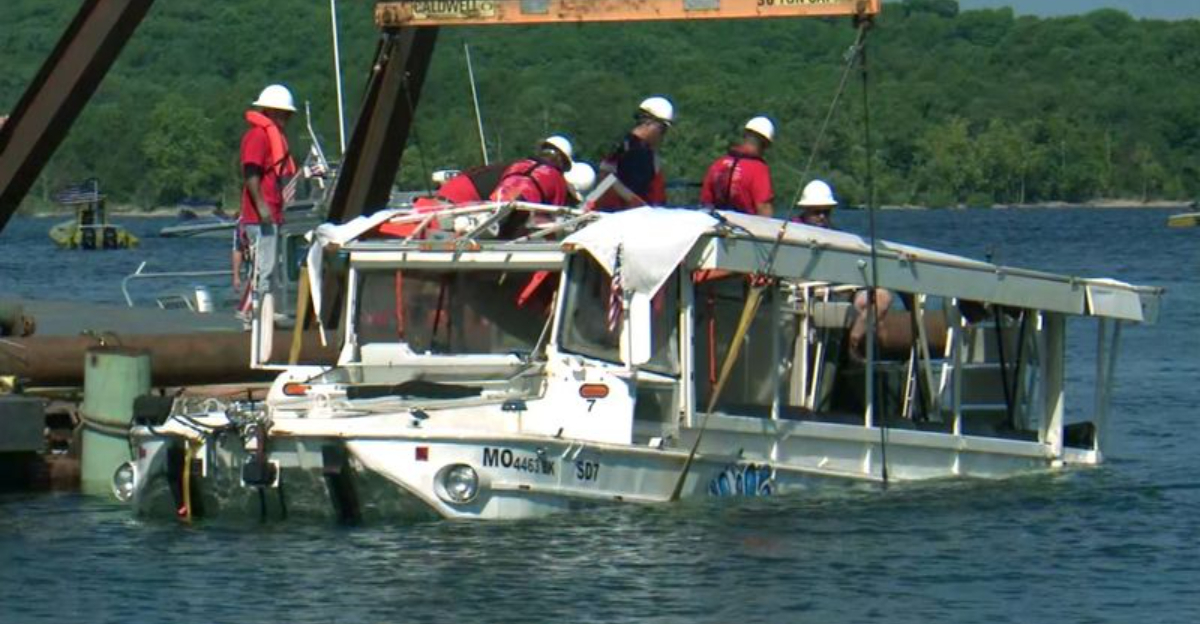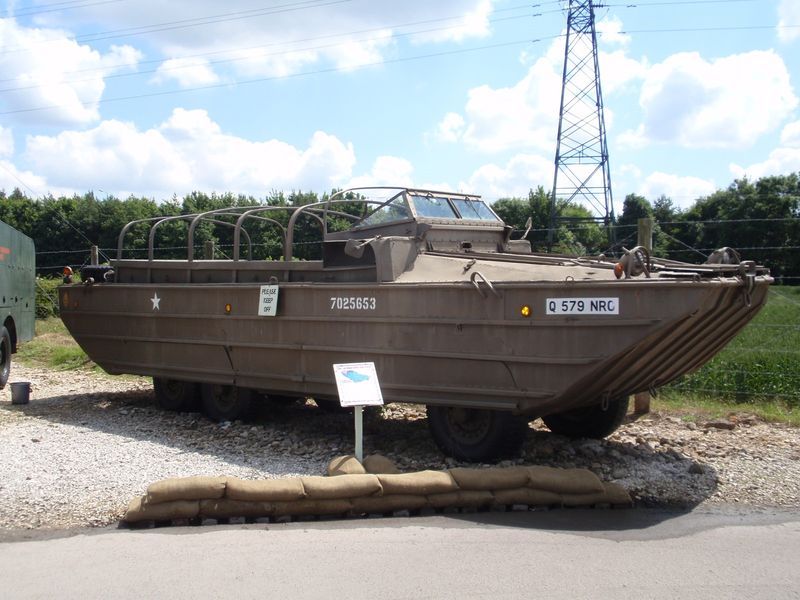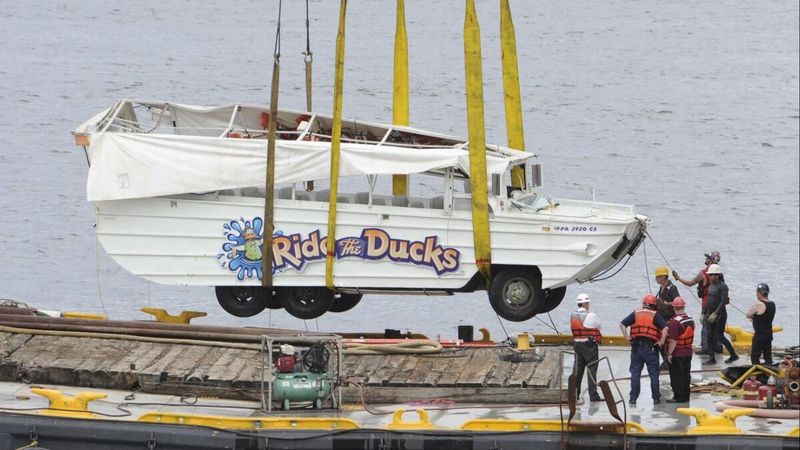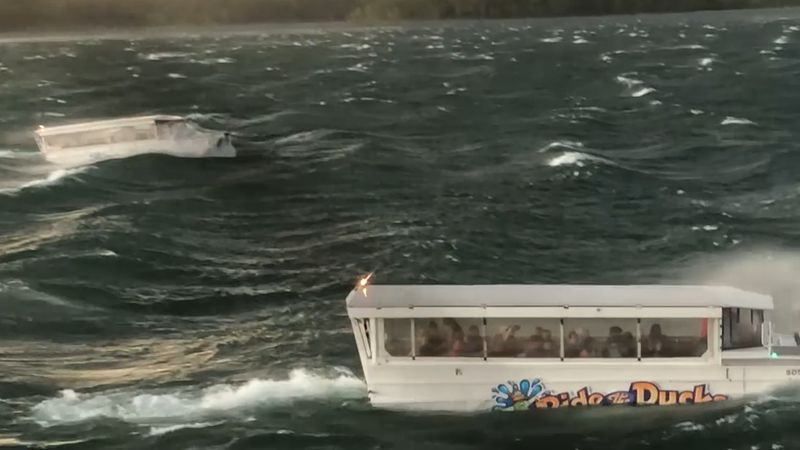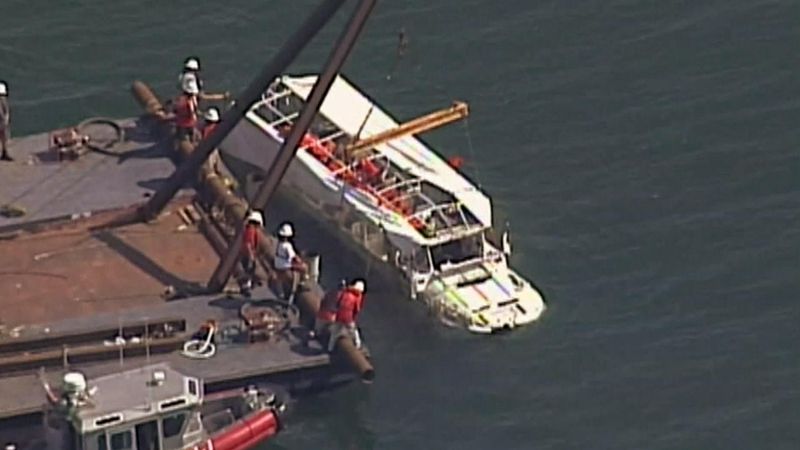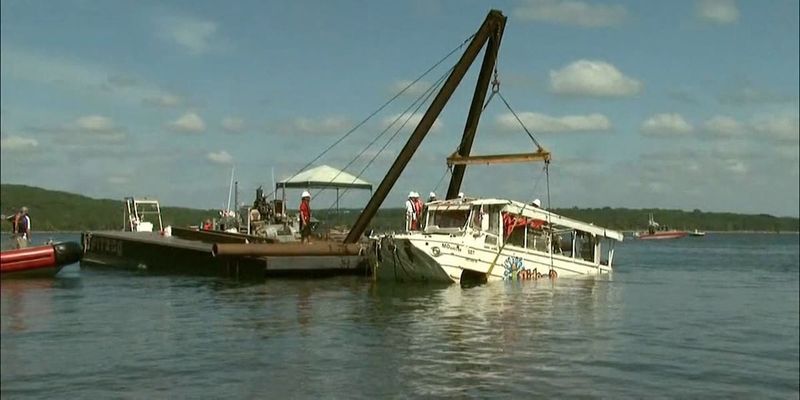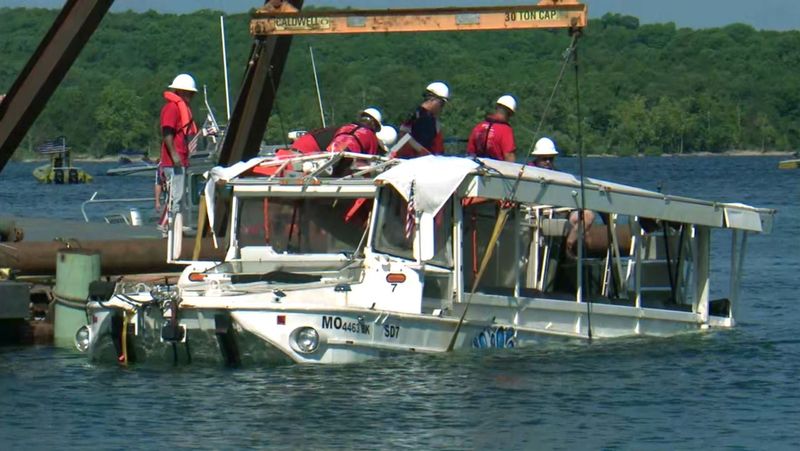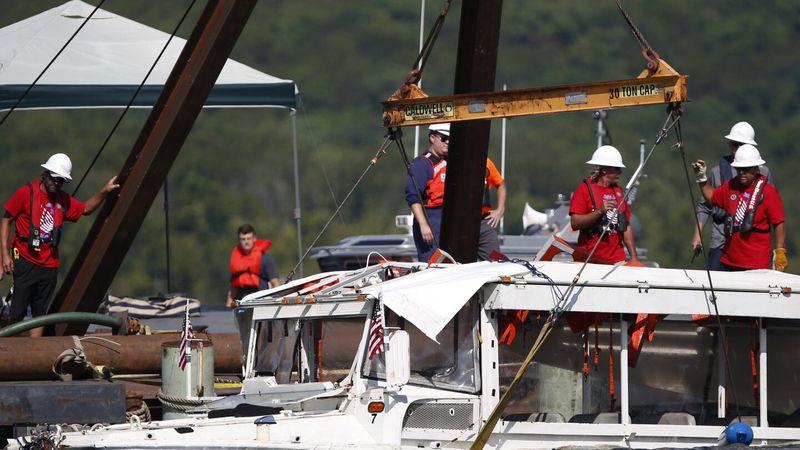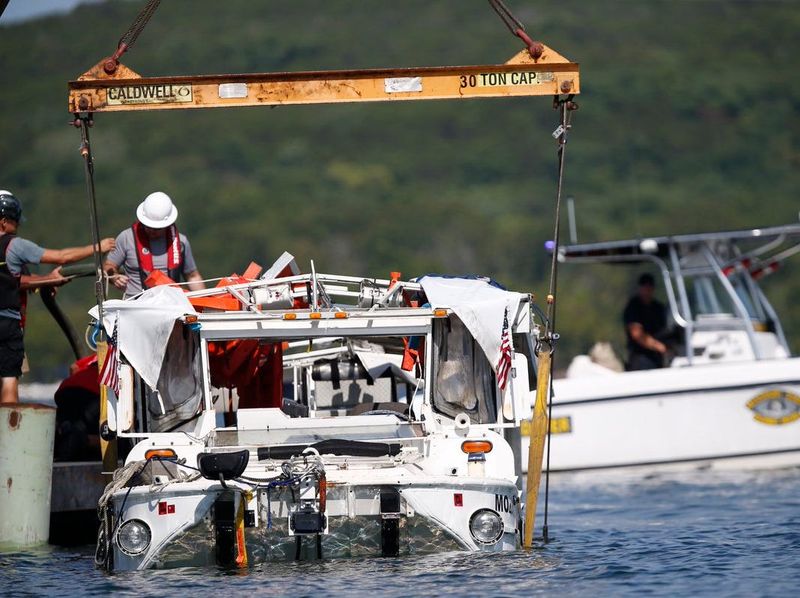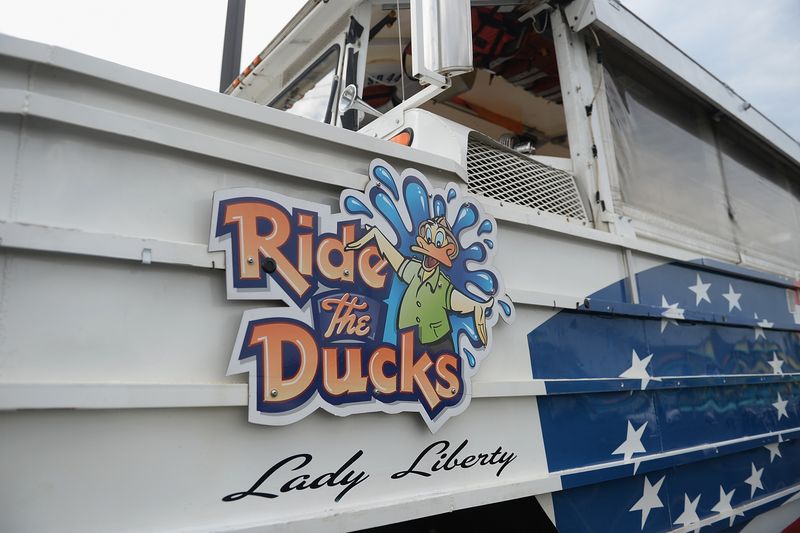On July 19, 2018, a sightseeing trip on a duck boat in Branson, Missouri turned into a horrifying tragedy. Seventeen people—children, parents, grandparents—lost their lives in a disaster that experts say could and should have been prevented. Here’s how a beloved tourist attraction became a symbol of deadly oversight.
1. What Are Duck Boats, Anyway?
Originally built for World War II, duck boats are unique amphibious vehicles capable of navigating both land and water. After their military service, many were transformed into popular tourist attractions. However, their aging designs have posed significant risks, especially when modern safety upgrades are ignored. With a history rooted in war but used for leisure, these vehicles carry an intriguing duality. Despite their charm, the vulnerabilities of their structure have made them a point of concern among safety experts.
2. Storm Warnings Were Issued—And Ignored
The National Weather Service had issued severe thunderstorm warnings well before the duck boat set sail. These warnings predicted winds exceeding 70 mph, highlighting an impending storm. Nevertheless, the tour proceeded, neglecting the ominous forecasts. The decision to ignore these warnings ultimately led to dire consequences. The oversight exposed flaws in safety protocols and decision-making. This act of neglect became a tragic lesson on the importance of heeding expert advice in the face of natural threats.
3. The Captain Knew the Storm Was Coming
Investigations later revealed that the captain was aware of the storm’s approach. Despite this knowledge, the boat ventured into Table Rock Lake, coinciding with the storm’s arrival. This choice had catastrophic results, as it exposed passengers to extreme weather conditions. It highlighted a blatant disregard for safety protocols. The captain’s decision exemplified a failure in judgment that led to irreversible consequences. The tragedy underscores the critical importance of making informed decisions in navigation.
4. The Boat Wasn’t Supposed to Be on the Water
According to company policy, duck boats were prohibited from launching in high-wind conditions. This particular tour flagrantly violated those guidelines, endangering lives. The decision to proceed disregarded established safety measures. This oversight reflects a larger issue within the company’s safety culture. Ignoring these protocols placed passengers in a perilous situation. The disregard for rules designed to protect highlights the need for strict adherence to safety regulations. It was a preventable tragedy rooted in neglect.
5. The Water Filled the Cabin in Minutes
Hurricane-force winds turned the lake tumultuous, and waves soon crashed over the duck boat’s sides. Within mere minutes, the cabin was overwhelmed with water, leading to a rapid sinking. Many passengers were trapped inside as chaos ensued. The speed at which the disaster unfolded was terrifying, leaving little time for escape. It was a vivid reminder of the vulnerabilities associated with enclosed spaces in such crafts. The incident highlighted the urgent need for improved safety designs and emergency responses.
6. Passengers Were Trapped by the Canopy
The duck boat’s low-hanging canopy, designed to protect from the elements, became a fatal trap. As the vessel sank, the canopy impeded passengers’ escape efforts. This design flaw had been cited in previous warnings, yet remained unaddressed. In moments of crisis, it transformed into a deadly obstacle. The tragedy highlighted the urgent need for revisiting design safety standards. This aspect of the disaster underscores the importance of prioritizing passenger safety over cosmetic features.
7. The Youngest Victim Was Just One Year Old
Among the victims of this disaster were nine members of a single family from Indiana. The youngest, just a year old, was part of a multigenerational vacation that ended in unimaginable loss. This sobering fact adds a deeply personal dimension to the tragedy. The loss of such young lives serves as a poignant reminder of the human cost of negligence. It underscores the irreplaceable nature of each life lost and the profound impact on surviving family members.
8. Safety Measures Were Lax to Nonexistent
Despite the severe storm, passengers were not required to wear life jackets, and crew members failed to enforce their use. This lack of precautionary measures is alarming. Some life jackets were later discovered still stored, unused. The oversight in enforcing basic safety protocols starkly contrasts with well-established maritime safety practices. This negligence in safety enforcement is a critical point of concern. It emphasizes the urgent need for stringent safety protocol adherence in potentially dangerous situations.
9. Previous Warnings Were Ignored
The National Transportation Safety Board (NTSB) had issued prior warnings regarding duck boat safety, yet these were largely ignored. After a similar tragic incident in 1999, experts called for critical redesigns. However, few changes were implemented. The repeated disregard for expert recommendations has had fatal consequences. This pattern of negligence underscores a broader safety compliance issue within the industry. It reflects a failure to learn from past tragedies and highlights the need for regulatory reform.
10. The Operator Had a History of Violations
Ride the Ducks Branson, the company operating the ill-fated boat, had a history of safety violations. These included mechanical issues and training deficiencies. Such a track record raises concerns about the company’s commitment to safety. These previous violations are indicative of systemic problems within the organization. The oversight in addressing these issues contributed to the tragic outcome. It highlights the critical importance of corporate accountability and proactive safety measures to prevent future accidents.
11. The Boat Didn’t Even Belong in That Water
Table Rock Lake, with its deep and expansive waters, was not an ideal setting for the duck boat. These vessels were initially designed for shallow, protected areas. The mismatch between the boat’s design and the lake’s conditions became evident during the storm. This choice further exacerbated the dangerous situation. It highlights a misjudgment in assessing the suitability of the boat for such waters. The incident underscores the need for careful consideration of vessel capabilities and environmental conditions.
12. It Took Just 26 Minutes from Launch to Disaster
In a mere 26 minutes, the duck boat journey turned from a peaceful tour into a disaster. The rapid progression of events left little room for response. This swift timeline illustrates the urgency and unpredictability of the situation. The speed at which the tragedy unfolded was a sobering reminder of the inherent risks involved. It highlights the necessity of being prepared for emergencies at any moment. The brief duration underscores the importance of vigilant safety practices.
13. A Heroic Survivor Lost 9 Family Members
Tia Coleman survived the sinking but faced the unimaginable loss of nine family members, including her husband and three children. Her story brought national attention to the personal toll of the tragedy. It exemplifies the profound impact of such disasters on individual lives. Tia’s resilience in the face of such loss resonates deeply. Her narrative became a touchstone for understanding the human dimension of the event. It highlights the urgent need for accountability and change.
14. Federal Investigators Found Multiple Failures
The NTSB investigation concluded that the tragedy resulted from multiple failures. These included ignored weather warnings, inadequate vessel modifications, and lack of oversight. The comprehensive findings highlighted systemic issues requiring urgent attention. The investigation emphasized the need for robust regulatory measures and industry compliance. These identified failures serve as a call to action for meaningful reform. They underscore the critical importance of addressing identified safety gaps to prevent future disasters.
15. Criminal Charges Were Filed—Then Dropped
Initially, the captain and two company officials faced charges of involuntary manslaughter. However, legal loopholes in maritime law led to some charges being dismissed. This development sparked debate about accountability and justice in maritime incidents. The legal challenges underscored complexities within the judicial system regarding such cases. It highlighted the need for clearer legal frameworks to ensure appropriate accountability. The outcome was a poignant reminder of the difficulties in achieving justice for victims’ families.
16. The Industry Still Has No Unified Safety Standard
Despite multiple fatal incidents involving duck boats, the industry remains without a unified safety standard. Regulations vary across states and companies, leading to inconsistent safety practices. This lack of cohesion poses ongoing risks to passengers. It highlights a critical gap in industry oversight. Implementing a standardized approach is essential for ensuring uniform safety measures. The absence of unified standards continues to be a point of contention among safety advocates. It underscores the urgent need for industry-wide reform.
17. The Victims Deserve More Than Thoughts and Prayers
The tragedy was not merely an unavoidable “act of God,” but a preventable disaster rooted in negligence. The 17 lives lost demand more than thoughts and prayers. This sentiment calls for real accountability, substantial reform, and genuine remembrance. It underscores the need for systemic changes to prevent similar tragedies. The heartfelt call to action resonates with those advocating for improved safety measures. It serves as a powerful reminder of the human cost of corporate and regulatory failures.
